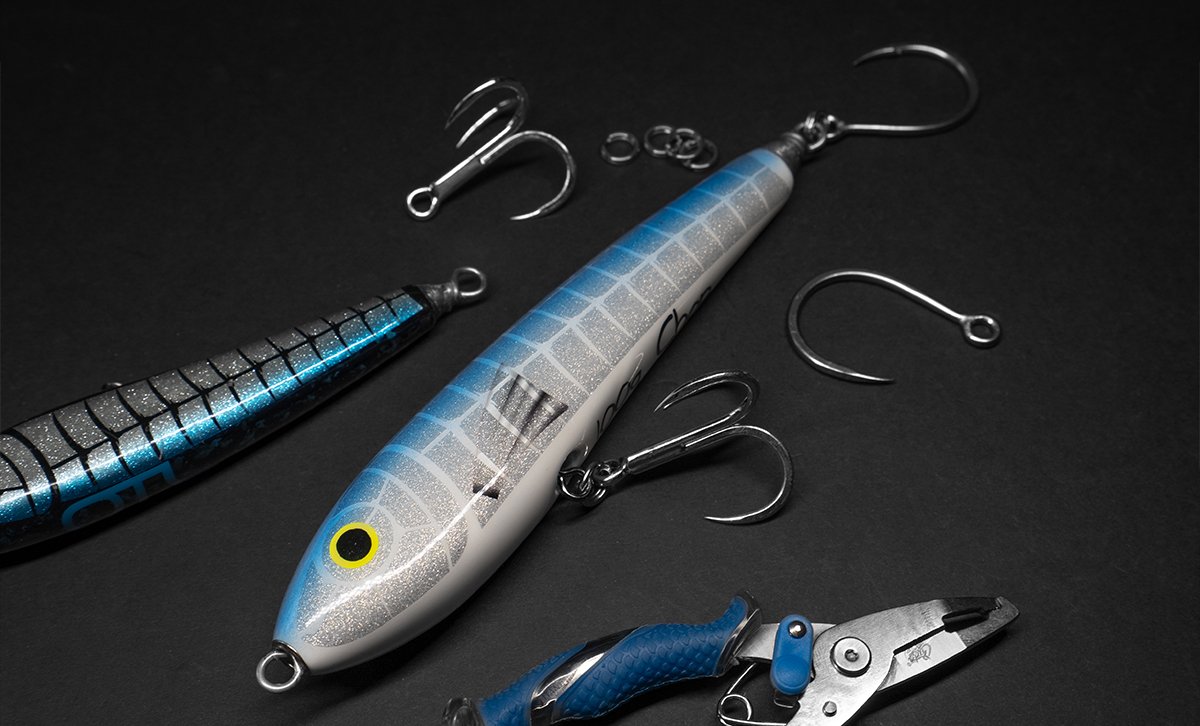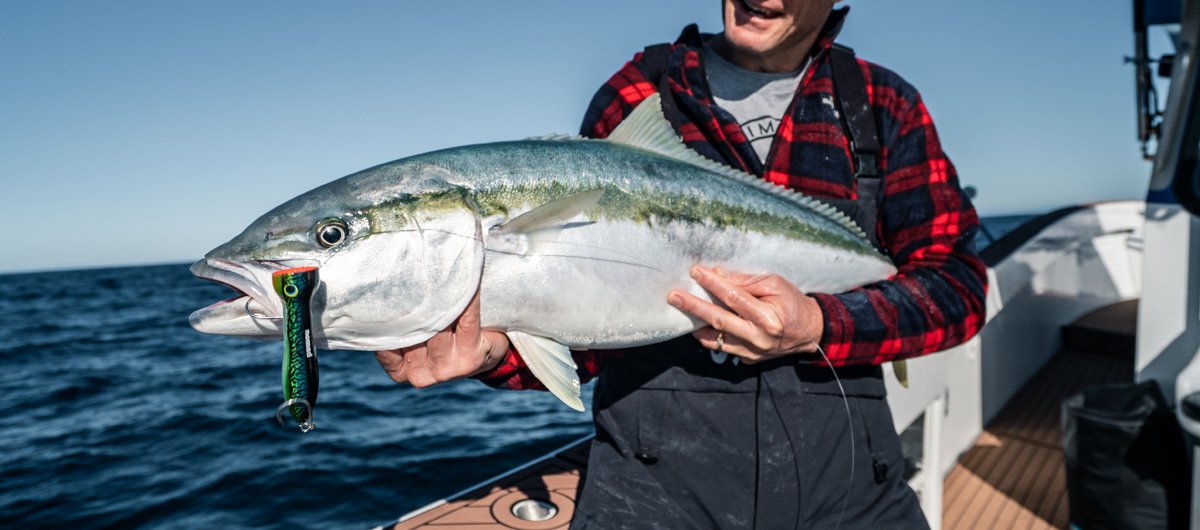Top Water Lure Hooks: What You Need to Know
Top water fishing is one of those styles of fishing that just has a lot going for it. The thing we love is that it’s actively fishing, you’re almost hunting for your target fish, actively working the lures, selecting your lure based on the environment and bait species etc. And the bites can be spectacular… but the stakes are high.
Sometimes you may only get one chance during a session, so you need to be sure you’re rigged with the right tackle.
Top water casting from the shore is mostly a game of persistence and chance. You can’t always go to where the fish are, so you’re relying on them to swim within range of your cast. Fishing from the boat around offshore reefs is a bit easier, but the fish you’ll encounter will often be larger and harder fighting.
Both of these situations require tackle that’s up to the task, which means strong and reliable hooks, and the right choice of connectors.
Here’s what you’ll need to know:
Top Water Lure Hook Types
There are three main types of top water lure hooks we use in New Zealand:
Inline Single
Treble
Single hook assist
There are of course other options, including double assists and back-to-back double hooks, but the vast majority of anglers will choose a mix of the above three hook types.
Choosing a hook type
There are a handful of things you will need to consider when choosing hooks:
Balance
Size
Performance
Ethics/preference
Balance
Most top water lures are designed and tuned to swim in a very specific way. The manufacturer/maker of your lure should have a recommendation on how they perform best. In most cases it will be designed with a treble hook on the belly, with a single or treble on the tail. Some lures are hyper-sensitive to hook configuration, while others will allow you to play around with balance and arrangements to modify the swimming action, sink rate, and more.
Size
Hook size is arguably the most important factor when it comes to how your lure performs. Hooks that are too big or too heavy will sink your lure and restrict the swimming action.
Hooks that are slightly too small may be okay, but could see you missing hook ups or failing under load from a big enough fish. Hooks that are far too small or light will affect the balance of the lure too - causing it to swim erratically or barely swim at all.
When selecting the size hook to use it’s usually best to start with what the lure builder recommends. You can then start switching things up to see how it affects the action and hook up rates.
Performance
Which type of hook works best? This is a much debated topic and opinions may vary angler to angler. Each hook type has pros and cons which we’ve outlined below, so choose which meets your needs the best.
Inline Single
Safer for the fish (and angler)
Reduces hook-rash on the body of your lure
Offers a good hook-up rate
Potential for hook + split-ring to bind up, or your fish to leverage its way loose
Cheapest option
Treble
Improved hook up rate
More dangerous for both the fish and angler
More chance of the fish leveraging itself free
Difficult to remove from flesh
Increased hook rash on body of lure
Higher price than inline single
Heavier weight can help balance lure
Single Assist
Improved mobility and swing of hook
Improves hook up rate
Reduces any chance of fish leveraging hook loose
Increases drag in water
Low hook rash compared to treble and single hooks
Slightly more expensive than other options (depending on specific style)
Ethics, Safety, and Other Considerations
Barbless
For anglers who practice catch and release fishing, the choice is usually a single hook with no barb. This can greatly reduce the stress and damage to the fish, and it’s much safer for the angler too. Many trips have been cut short from a barbed single or treble embedded in human flesh.
Trebles
Trebles are typically (but not always) a no-go for catch and release angler, but barbless versions are available which give a slight improvement to both fish and angler safety. If you’re playing to keep your catch, or your lure performs better with a bit of weight on the belly, running a treble may be the way to go.
Single Assists
Assist hooks are no safer for the fish or angler than your standard inline singles, but they do look cooler and offer solid improvements on hook up rate.
As you can see, the hook size is guided by the size of your top water lure, and the size of your lure is guided by your target species.
The hook type, whether it be a treble, inline single, assist (or a mix) is often guided by both lure type and your own personal preference as an angler. Regardless of which type you choose to use, it’s important to make sure you’re choosing a quality hook to reduce the risk of lost fish.
Connections
Choosing the right terminal connection is an incredibly important (yet often overlooked) part of your top water system. Once the hook has done it’s job, it’s up to the split-ring or solid-ring to transfer that force to the rest of the system
This step is fairly easy to get right, and there’s only a few things to look out for when choosing the right split-ring or solid-ring.
Split-ring Size
You want the ring to be large enough that the hook can move freely in all dimensions. A ring that is too small will be difficult to attach, deform when opening, and be more likely to bind up. A ring that is too big will be difficult to attach and constrict free movement inside the ring on the hook - again causing it to bind up.
Split-ring Quality
A high-quality ring will have a good amount of elasticity and should be able to retain it’s original shape after slight deformation. BKK Split-rings come with polished edges which reduces line abrasion at the tow-point, and helps to avoid the hook getting caught up.
Top water fishing can be one of the most rewarding ways to catch a fish. It takes effort and dedication but that feeling of seeing the fish rise up behind your lure, and the hard fight that comes straight after is simply unbeatable!





